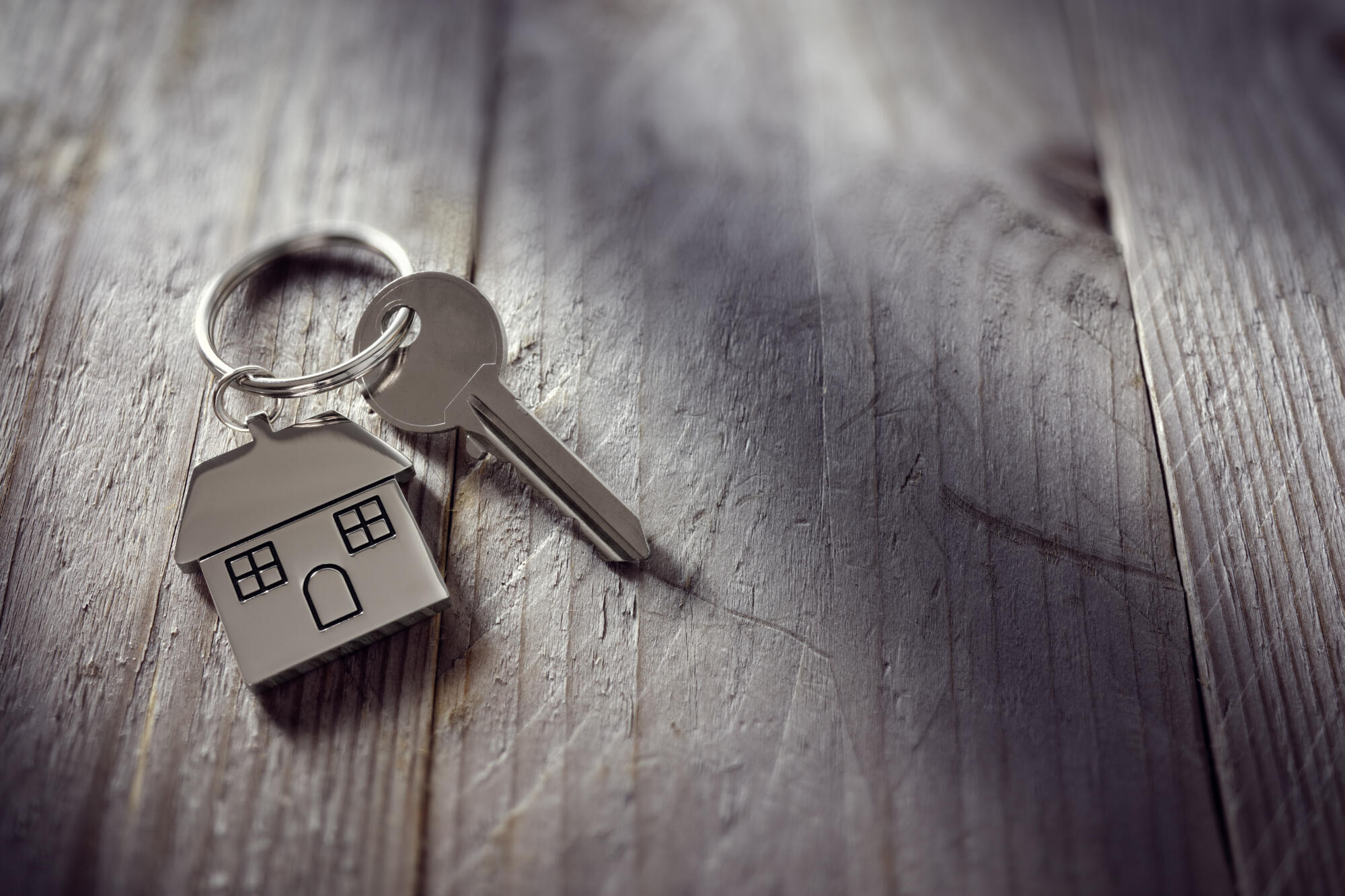Ever wondered what goes on during a home inspection? It’s the moment of truth when your prospective new home gets scrutinized from top to bottom. From the foundation to the roof, every nook and cranny is thoroughly examined, including the chimney. But what exactly should you expect during this crucial process? Let’s delve into the nitty-gritty of home inspections and uncover all that lies beneath the surface.
Knowledge is power. Understanding what’s involved, including listing inspection, coverage options, cost, and customer experience, can help you prepare for any potential findings and make informed decisions about your investment. So, let’s roll up our sleeves and get ready to explore everything from structural integrity to electrical systems in this comprehensive guide.
Key Takeaways
- Select a reputable and experienced home inspector to ensure a thorough and reliable inspection process.
- Prepare your home for inspection by addressing any visible issues, ensuring access to all areas, and organizing necessary documentation.
- During the inspection, actively participate, ask questions, and take note of any significant findings or concerns.
- Understand the inspection report in detail, seeking clarification on any unclear points and prioritizing necessary repairs or maintenance.
- After the inspection, take prompt action on any identified issues and consider additional specialized inspections if required.
- Differentiate between home inspection and appraisal processes to understand their distinct purposes and implications.
Selecting a Home Inspector
Hiring Criteria
There are several key criteria you should consider. First, researching the inspector qualifications is essential. Look for inspectors who have undergone comprehensive training and possess relevant certifications and licenses. Seeking referrals and reviews from friends, family, or real estate agents can also provide valuable insights into an inspector’s reputation and service quality.
Furthermore, checking for certifications and licenses is crucial when choosing a home inspector. Make sure that the inspector holds the necessary credentials to perform inspections in your state or region. This ensures that they have met the required professional standards and adhere to industry regulations.
For example:
- Researching online reviews on platforms like Yelp or Google can give you an idea of an inspector’s reputation.
- Asking your real estate agent for recommendations can lead you to experienced and trusted inspectors in your area.
Professional Qualifications
In addition to hiring criteria, it’s important to assess the professional qualifications of a potential home inspector. Look for individuals who have received thorough training and education in property inspection practices. Furthermore, inquire about their industry affiliations and memberships as these demonstrate their commitment to upholding professional standards within the field.
Moreover, considering an inspector’s experience in the field is vital when making your selection. An experienced home inspector is likely more adept at identifying issues within properties due to their exposure across various homes over time.
Pre-Inspection Preparations
Seller Responsibilities
Before a home inspection, sellers have several responsibilities to ensure the property is ready for evaluation. This includes preparing the property by cleaning and decluttering to make all areas accessible. Sellers should also provide access to all parts of the house, including attics, basements, and crawl spaces. It’s crucial for sellers to disclose any known issues with the home before the inspection.
Sellers play a vital role in creating an environment that allows inspectors to thoroughly evaluate the property. By preparing their home adequately and disclosing known issues upfront, they contribute to a transparent and efficient inspection process.
Buyer Considerations
Buyers can actively participate in the home inspection process by attending if possible. Being present during the inspection provides buyers with firsthand knowledge about their potential future home. It also allows them to ask questions directly as they arise throughout the assessment.
During the home inspection, it’s important for buyers to be engaged and proactive by asking relevant questions about any concerns or observations made by the inspector. Understanding how findings could impact their decision-making process is essential for buyers.
Attending a home inspection empowers buyers with valuable insights into their prospective purchase while giving them an opportunity to address any uncertainties or queries directly with the inspector.
During the Inspection
Key Areas of Focus
A home inspection involves a thorough assessment of various key areas. The structural integrity of the home is evaluated, ensuring that the foundation, walls, and overall structure are sound. The inspector reviews the HVAC, plumbing, and electrical systems to identify any potential issues or safety concerns. The roof, attic, and basement are also carefully examined for signs of damage or deterioration.
During a home inspection day, it’s crucial to pay attention to these specific areas as they directly impact the safety and functionality of the property. For instance, if there are problems with the HVAC system or structural components like beams and columns, it could lead to costly repairs in the future. By understanding what aspects are being assessed during an inspection, homeowners can better comprehend their property’s condition.
In some cases where external elements such as heavy rain or snowfall have occurred recently before an inspection day takes place; this information should be shared with inspectors so that they can pay extra attention to potential water damage in basements or attics due to leaks caused by these weather conditions.
Active Participation
Active participation during a home inspection involves more than just being present at your listing inspection; it means engaging with the process actively. Observing how inspectors conduct their assessments allows homeowners to gain valuable insights into their property’s condition and customer experience. Noting important details and findings throughout the inspection ensures that nothing significant is overlooked.
Moreover, seeking clarification when needed is essential for homeowners during an inspection day. If something seems unclear or if there are unfamiliar terms used by inspectors regarding certain components like electrical panels or plumbing fixtures; asking questions helps in gaining a better understanding of any potential issues identified.
Understanding the Inspection Report
Report Components
Once the home inspection is completed, you will receive a detailed inspection report outlining all the findings. This document serves as a comprehensive overview of the property’s condition and includes supporting documentation such as photos or videos to provide visual evidence of any issues discovered during the inspection. The report will also include recommendations for further action, which may involve repairs, maintenance, or seeking specialized inspections from other professionals.
The report typically covers various areas of the property, including the interior, exterior, roofing, plumbing, electrical systems, HVAC (heating, ventilation, and air conditioning), and more. Each section will detail any concerns found in that specific area, ratings, cost. For example:
- If there are issues with the roof such as missing shingles or signs of damage.
- Problems with electrical systems like outdated wiring or malfunctioning outlets.
- Plumbing issues such as leaks or poor water pressure.
In addition to identifying problems within these components of a home, an inspection report can also highlight positive aspects about a property that could be beneficial for potential buyers.
Identifying Red Flags
During a home inspection process it is important to identify any red flags that might indicate serious problems with the property. These red flags can include visible signs of water damage which may appear on walls or ceilings in the form of stains or discoloration caused by leaks. Another concern is mold growth, especially in damp areas like basements and bathrooms.
Additionally,evidence of pest infestation, such as droppings from rodents or insects can be noted in an inspection report. Pest-related issues at home can range from minor nuisances to significant structural damage if left unaddressed.
Furthermore,safety hazards are crucial to identify during an inspection; these can include faulty wiring posing fire risks and unsafe structural conditions like cracks in foundations or load-bearing walls.
Inspectors are trained to look out for these indicators during their evaluation so they can accurately inform clients about potential risks associated with purchasing a particular property.
Post-Inspection Steps
Addressing Issues
After receiving the inspection report, it’s crucial to prioritize necessary repairs. Focus on safety hazards and structural issues first. For instance, if the report highlights a faulty electrical system or a leaky roof, these should be addressed promptly.
In cases where complex matters are identified, seeking professional opinions is essential. For example, if there are concerns about the foundation of the property or potential mold infestation, consulting with specialists in those areas can provide valuable insights.
Negotiation may be necessary if significant issues are uncovered during the inspection. If you find yourself in this situation, consider negotiating with the other party involved in the transaction. This could involve requesting repairs or compensation for identified problems.
Negotiation Strategies
The inspection report can serve as powerful leverage during negotiations. Use it to highlight specific defects, potential impact on the property’s value, and ratings on livability. This can strengthen your position when negotiating with the other party, especially when discussing repair requests or financial compensation.
When negotiating post-inspection issues, consider requesting specific repairs based on the findings in the report. Alternatively, you might opt for monetary compensation to address customer experience independently after closing. Both options have their own set of pros and cons that should be carefully weighed before making a decision.
It’s important to also think about long-term implications when negotiating post-inspection matters. While certain customer experience issues may seem minor now, they could lead to more significant problems down the line if left unaddressed.
Home Inspection vs. Appraisal
Purpose Distinctions
Home inspections and appraisals serve different purposes for buyers and sellers. Buyers schedule home inspections to identify any potential issues with the property before finalizing the purchase, aiming to ensure that they are making a sound investment. On the other hand, sellers may conduct pre-listing inspections to address any concerns beforehand or gain insight into areas of improvement.
Understanding these motivations is crucial in managing expectations during a home inspection. Buyers should anticipate discovering both major and minor issues, while sellers need to prepare for potential negotiations based on the findings. By recognizing these differing perspectives, both parties can approach the process more effectively.
Impact on Transactions
The results of a home inspection can significantly influence purchase decisions. If substantial problems are uncovered, buyers might negotiate repairs or request a lower sale price to account for necessary fixes. Conversely, if no major issues arise, it can provide peace of mind and strengthen their commitment to purchasing the property.
For sellers, inspection outcomes directly impact sale price negotiations. Addressing identified concerns promptly could help maintain the agreed-upon price or even lead to increased buyer confidence in proceeding with the transaction at an optimal value. However, unresolved issues may prompt buyers to reconsider their offers or potentially withdraw from the deal altogether.
Financial Aspects
Inspection Costs
Home inspection costs vary based on property size and location. For instance, a larger house or one located in a high-cost area may incur higher inspection fees. However, these expenses are a worthwhile investment for peace of mind as they can reveal potential issues that could be costly to fix later. In the long run, uncovering problems early through an inspection can lead to significant savings.
Investing in a home inspection is often seen as a valuable step before purchasing a property. It provides buyers with crucial information about the condition of the home they intend to purchase, allowing them to make informed decisions about their investment. The cost of an inspection pales in comparison to the potential financial repercussions of buying a property with undisclosed structural or safety issues.
Contingency Considerations
Including inspection contingencies in contracts is essential for protecting both buyers and sellers during real estate transactions. These clauses allow buyers to back out of the deal if significant problems are uncovered during the inspection process without losing their earnest money deposit.
Common Home Inspection Findings
Typical Defects
There are several common issues that inspectors often uncover in both older and newer houses. In older homes, typical defects may include faulty wiring, plumbing problems such as leaks or corrosion, roof damage like missing shingles or water stains, and foundation issues like cracks or settling. On the other hand, potential problems in newer constructions could involve improper installation of systems such as HVAC or electrical components, inadequate insulation, or even structural deficiencies due to poor workmanship.
Understanding normal wear and tear is crucial for homeowners preparing for an inspection. This includes recognizing minor cosmetic flaws like chipped paint or small cracks that don’t significantly impact the home’s functionality. Knowing what falls within the realm of expected aging can help homeowners differentiate between acceptable wear and tear versus more serious concerns that may need attention before putting the house on the market.
Effect on Property Value
The findings from a home inspection can have a substantial effect on a property’s value. If major repair needs are identified during an inspection, they can significantly decrease the value of a house. For instance, identifying extensive water damage from a leaky roof could lead to costly repairs which would then lower the overall value of the property.
These findings also play a role in influencing appraisals conducted by lenders when buyers seek financing for purchasing a home. Major repair needs uncovered during an inspection might result in appraisers valuing the property at less than its agreed-upon sale price if those repairs aren’t addressed beforehand.
Furthermore, common issues found during home inspections can reflect current market conditions. In a buyer’s market where there is an abundance of homes available for sale but fewer buyers actively seeking properties, any significant defects discovered during an inspection could give potential buyers leverage to negotiate for lower prices based on needed repairs.
Additional Inspection Services
Specialized Examinations
There are various additional services that can be included to provide a more comprehensive assessment. For instance, specialized examinations may involve tests for radon or lead paint. Radon is a colorless, odorless gas that can seep into homes from the ground and pose health risks. Lead paint assessments are crucial, especially in older homes where lead-based paint might have been used. Furthermore, environmental concerns such as mold or asbestos could also be evaluated during these specialized examinations.
In addition to these specific tests, certain regions might require unique evaluations due to geological or environmental factors. For example, properties in coastal areas may need assessments for hurricane resistance and flood risk. In contrast, homes in earthquake-prone regions might undergo structural evaluations tailored to seismic activity.
Enhancing Inspection Scope
To enhance the inspection scope further, additional services can be considered based on the property’s needs. This involves adding specialized inspections if necessary; for instance, if the home has a pool or an extensive outdoor area with landscaping features like retaining walls or decks.
Moreover, considering energy audits as part of the inspection process can help identify potential energy efficiency improvements within the property. This could involve assessing insulation levels and identifying air leaks that contribute to higher utility bills.
Customizing the inspection process based on property type is another way of enhancing its scope. For example:
- A commercial building might require inspections related to fire safety systems and compliance with commercial building codes.
- A multi-unit residential property may need evaluations of shared spaces like parking lots and common areas.
- On the other hand, a single-family home may benefit from inspections focused on individual appliances such as HVAC systems and water heaters.
Conclusion
Closing Thoughts
You’ve now gained valuable insights into the intricate process of a home inspection, from selecting the right inspector to understanding the inspection report and navigating post-inspection steps. Remember, a thorough home inspection is your best defense against potential future headaches and unexpected expenses in your new home. So, when it’s time for your own inspection, arm yourself with this knowledge and be an active participant in the process. Your proactive approach can make all the difference in ensuring that your dream home doesn’t turn into a nightmare.
Now that you’re equipped with this knowledge, go forth and conquer that home inspection! Don’t hesitate to ask questions, seek clarification, and take charge of understanding every aspect of the inspection. Your future self will thank you for it.
Frequently Asked Questions
What should I look for when selecting a home inspector?
Look for a certified and experienced home inspector with good references. Check if they are thorough, communicate well, and provide detailed reports. It’s like choosing a detective for your house – you want someone who can uncover even the smallest clues.
How should I prepare for a home inspection?
Clear access to all areas is essential. Make sure utilities are on, pets are secured, and any clutter is removed. Think of it as preparing for an important guest – you want everything neat and accessible so that the inspector can do their job effectively.
What happens during the actual inspection process?
The inspector will thoroughly examine all visible aspects of your property, from the roof to the foundation. They’ll take notes, photos, and maybe even climb into tight spaces to ensure nothing goes unnoticed. It’s like giving your house an annual physical check-up.
How do I interpret the home inspection report?
The report will detail findings categorized by severity. Focus on major issues affecting safety or structural integrity first; then consider other items based on importance and cost implications. It’s like getting a health report – address critical issues promptly while planning for less urgent matters.
Are there additional services I should consider alongside a standard home inspection?
Depending on your property type or location, you might need specialized inspections such as termite checks or radon testing. These extra services can provide peace of mind about specific concerns related to your potential new home.






